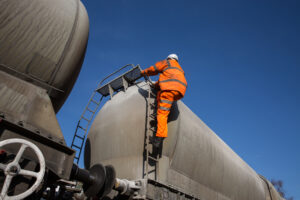Protective Clothing

The various methods to control risks are, in order of preference, hazard elimination, substitution, engineering controls, administrative controls and personal protective equipment (PPE). Workers are responsible for providing basic safety head gear such as a hard hat, hand protection, safety footwear and clothing appropriate for the weather. Employers are responsible for providing any additional PPE required for the job, at no cost to the worker and may include high-visibility apparel, respiratory protection, fire-resistant clothing, noise face or body protection. PPE needs to be properly selected, used, and maintained to be effective. PPE selection and use should be based on a risk assessment. Consider applicable standards for the type of PPE and could it create any additional hazards.
Flame-resistant (FR) clothing is a must for any occupations that put workers at risk of burns from hydro carbon flash fires and electric arcs. The first step in choosing the right PPE for the job is identifying the hazard, whether it’s flash fire or electric arc flash. The best type of fabric choice is one that self-extinguishes quickly (the longer a fabric can burn, the more likely it is to burn the wearers skin). The garment’s flame-resistant properties ensure it will resist catching fire, and if it does catch fire, it will not continue to burn once the source of combustion is removed.
Flame-resistant (FR) clothing can and will burn when introduced to open flame from a flash fire, arc flash, combustible dust explosion or other fire sources. Flame-resistant clothing is NOT fireproof. All Arc Rated (AR) clothing is flame resistant (FR), but not all Flame-resistant clothing has been Arc Rated. By not continuing to burn after the initial hazard is over, FR clothing limits burn injury to, at most, only the body surface area directly impacted by the hazard. All Arc Rated clothing is flame resistant; the official arc rating standard requires fabrics to be subjected to arc flash testing. Arc rating is defined as the amount of energy a given fabric can withstand before a 50 percent likelihood of the onset of second degree burn through the fabric. In other words, what is being measured is insulation of FR fabrics to arc flash. The arc rating is reported as a single number and the higher the better.




